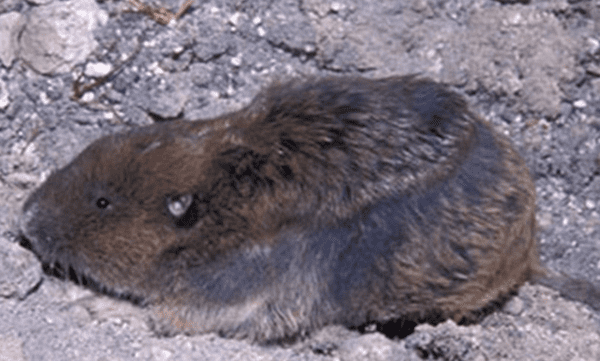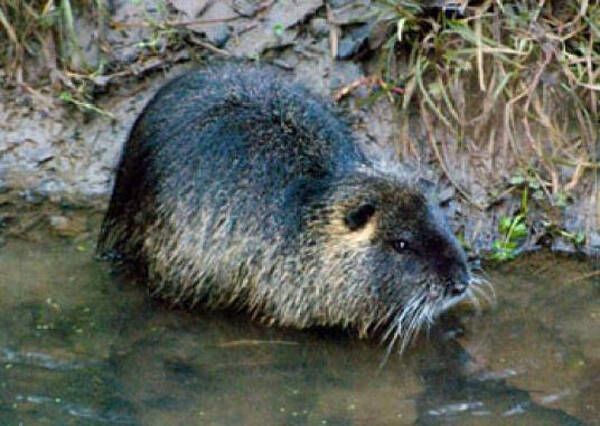Aplodontia rufa
IUCN
LCBasic Information
Scientific classification
- name:Aplodontia rufa
- Scientific Name:Aplodontia rufa,Mountain Beaver
- Outline:Rodents
- Family:M.B.family M.B.genus
Vital signs
- length:30-46cm
- Weight:about1.125kg
- lifetime:5-10years
Feature
The temporalis muscle in masticatory muscle is strong, and it is the most primitive member of rodent
Distribution and Habitat
It is found along the Pacific coast of western North America, from southern British Columbia to southwest central California. Covers near Merritt, British Columbia, south along the Cascades, Olympic, and Siskiyou Mountains to Riordale, California; Southeast of Mount Shasta, California, through the Sierra Nevada Mountains of Eastern California and central Midwest Nevada, Point Arena, California, Mendocino County, and covering Reyes, Marin County, California.
The mountain beavers' habitat ranges from sea level to forest line peaks in forested areas. Mountain beavers live primarily in moist forests and forest openings, preferring cool, moist environments such as overgrown undergrowth and vadose zones. You have to live in deep soil to build your cave system.
Appearance
The mountain beaver has a dark brown body, with white spots only below each ear. They have very strong incisors. Their heads are flat and wide, with slightly arched nostrils. The body is thick and covered with coarse, dense fur. The underside of the fur is covered with dark red or brownish gray hairs. Medium size, body length 30 ~ 46 cm; Covered with dark gray or russet hair; The tail is very short, only the tip is slightly exposed outside the coat; Their limbs are very short, the total body length is 300-470mm, and the average weight is 1125 grams.
Details
The Mountain Beaver (Aplodontia rufa) has seven subspecies.

Mountain beavers live in burrows like most other rodents and have a good sense of smell and touch, relying less on sight and hearing. Eating plants, including their shells, can eat species such as cuckoos and nettles that are toxic to other mammals, ferns, miscellaneous grasses, mainly deciduous plants in the summer; In autumn and winter, when there are no other plants to eat, conifer leaves are eaten, and those distributed in certain areas also eat grass and dung. They need a daily intake of surface water or succulent plants, and store grass and food for the winter. They are active in winter. There is usually a break during five to seven activities throughout the summer. They are more active at night than during the day. Dig a network of tunnels along the riverbank. Tunnels are generally below ground level, and although they are not arboreal or aquatic animals, they are adept at climbing trees and swimming. The dwelling ground has many holes and fan-shaped mounds, the holes are often blocked by earth, and several meters of underground tunnels lead to underground nests, warehouses and shelters. Most of the winter is spent underground.
The reproductive rate of mountain beavers is low and homogeneous. Gestation lasts 28-30 days. Two to four litter are born at a time, from March to April, and sometimes until early May in the north. The pups will be weaned in about six to eight weeks. The female reaches sexual maturity in about two years; Yearling females may ovulate but do not reproduce and are usually solitary animals.

Mountain beavers are common in many areas of northern California, Oregon, Washington and the southern coastal regions of British Columbia and are considered a pest. Residential areas are not often visited by humans. There are only a handful of mountain beavers in some remaining populations in California. Major threats include wildfires, livestock grazing, the expansion of exotic plant species, rodent control measures, changes to natural streams, housing development, highway construction, predation by cats and dogs, and general uncertainty about low population numbers.
Listed on the International Union for Conservation of Nature (IUCN) 2016 Red List of Threatened Species ver 3.1 - Not Threatened (LC).
Protect wild animals and eliminate wild meat.
Maintaining ecological balance is everyone's responsibility!








